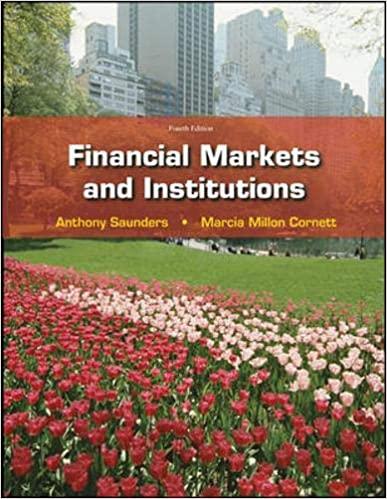
Apected increase oo Larocess and therefore labor cos adding new man... 5% 15 point ear. Hower of tumpa is . carn Using nach Y Asts b. C arte cets INR (5 po as we c. Bas on.. Cathe cated in uvestment? Unfortunately, this plot crosses the X axis at 3 places! So, it has multiple possible rates of return. These can be seen in the graph, though the exact values show up in the link. The zeroes are approximately: x= (-1.49, 0.24, 1.12). The CEO wants to understand what each of these numbers mean. He knows that since x is (1+r) if he were to invest $1 and get an interest rate of 'x', his money after a single period would change by x. So, for the first rate, i.e. -1.49, this means his $1 of money (assets), would become $1.49 of debt. Similarly, if he waits another period, it will turn into $2.22 of assets since FV-2=1.49(1+i)2. Notice on the even years our negative rate becomes posi- tive. The CEO knows this is impossible, otherwise he could get rid of all his company's debt by investing it here for 1 period. Real interest rates either shrink or grow the investment, they cannot negate it, i.e. O 1 a. Which of the 4 IRRs above are real and why? (There may be more than 1) (4 points) Input His plot looks like this: Plots: 2000 2000 400 8000 2000 -4000 250000 200000 150000 10000 Note: In the above equation, x repre- sents (1+r) i.e. When you gain interest, you multiply your money by (1+r), this is what x represents in the above equation. (x from-1.7 to 5) 50000 -50 000 (this was done in wolfram alpha: link) Apected increase oo Larocess and therefore labor cos adding new man... 5% 15 point ear. Hower of tumpa is . carn Using nach Y Asts b. C arte cets INR (5 po as we c. Bas on.. Cathe cated in uvestment? Unfortunately, this plot crosses the X axis at 3 places! So, it has multiple possible rates of return. These can be seen in the graph, though the exact values show up in the link. The zeroes are approximately: x= (-1.49, 0.24, 1.12). The CEO wants to understand what each of these numbers mean. He knows that since x is (1+r) if he were to invest $1 and get an interest rate of 'x', his money after a single period would change by x. So, for the first rate, i.e. -1.49, this means his $1 of money (assets), would become $1.49 of debt. Similarly, if he waits another period, it will turn into $2.22 of assets since FV-2=1.49(1+i)2. Notice on the even years our negative rate becomes posi- tive. The CEO knows this is impossible, otherwise he could get rid of all his company's debt by investing it here for 1 period. Real interest rates either shrink or grow the investment, they cannot negate it, i.e. O 1 a. Which of the 4 IRRs above are real and why? (There may be more than 1) (4 points) Input His plot looks like this: Plots: 2000 2000 400 8000 2000 -4000 250000 200000 150000 10000 Note: In the above equation, x repre- sents (1+r) i.e. When you gain interest, you multiply your money by (1+r), this is what x represents in the above equation. (x from-1.7 to 5) 50000 -50 000 (this was done in wolfram alpha: link)







